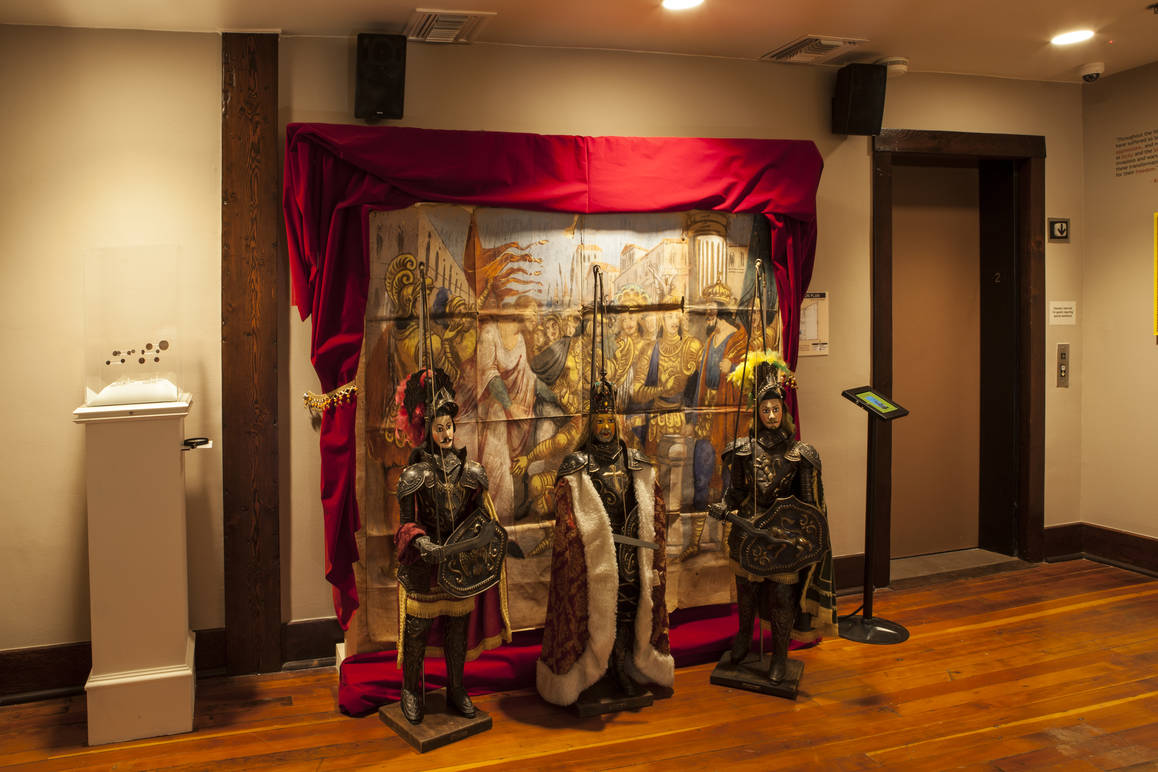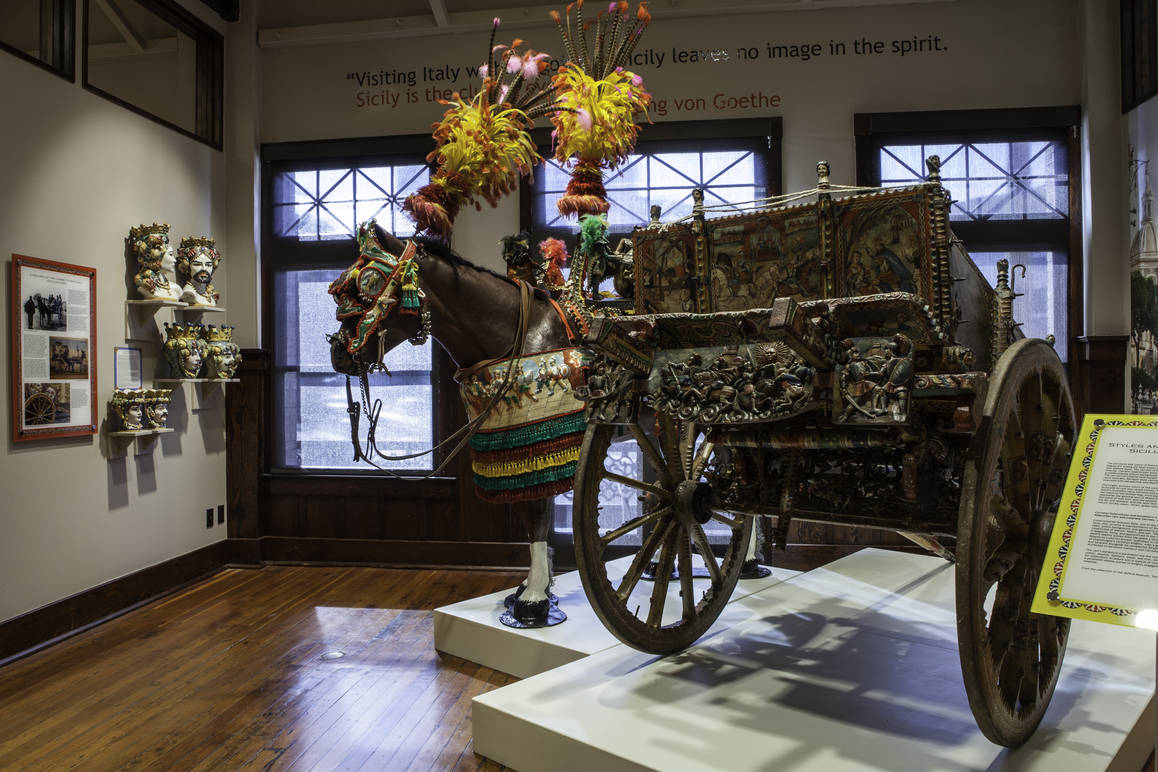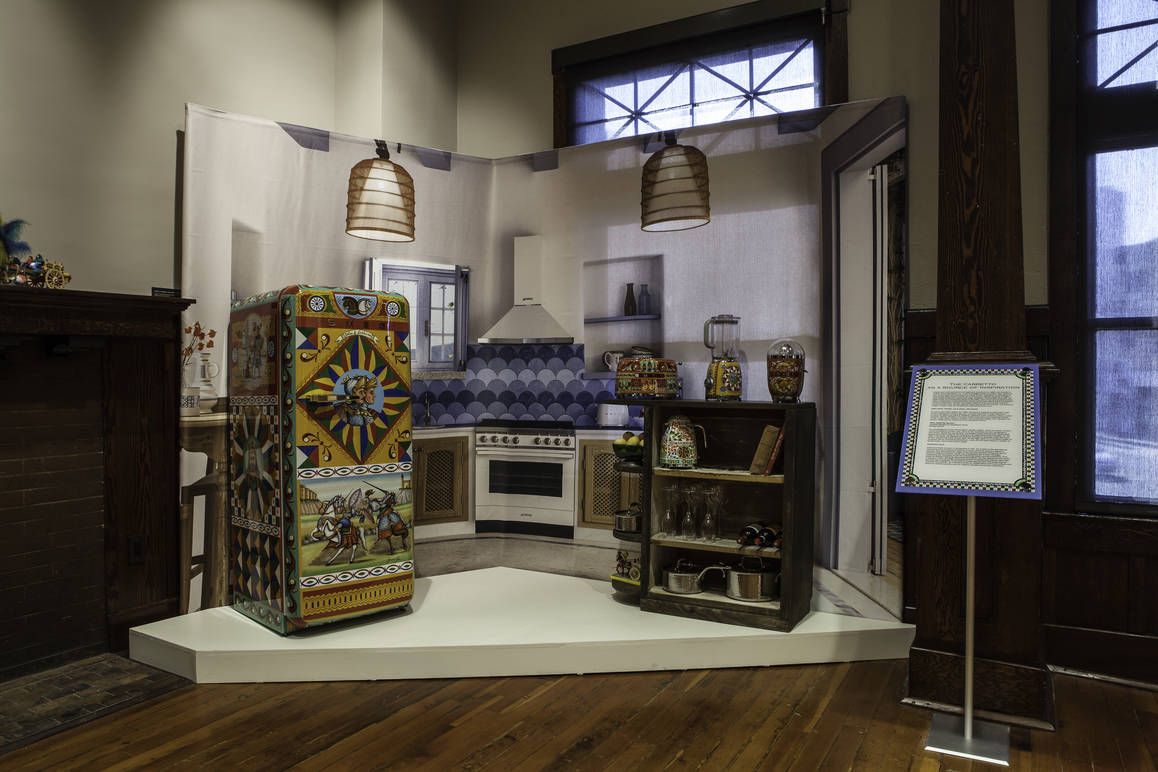The Sicilian Carts Journey to L.A.
Organized in collaboration with the MUSCÀ Museum (Museum of the Sicilian Cart), the exhibit is the first of its kind in Los Angeles. The first two editions of the showcase were curated by MUSCÀ at various locations in Taormina, Sicily.
“We conceived this exhibition as a lens through which to share Sicily itself–the multilayered history of the island,” said Marianna Gatto, IAMLA’s executive director. “The Sicilian cart provides such a wonderful perspective of Sicily’s history, and the many cultures that shaped what we now consider to be Sicilian.”
The exposition, now traveling to Downtown LA, features two original carretti (traditional horse or donkey-drawn carts), which are an integral facet of Sicily’s anthropology and iconography. Ornate illustrations decorating the carts depicted historic events, literary works and religious subjects, serving as an important means of transmitting knowledge and culture (in addition to physical goods) to an often illiterate population.
“We wanted to not only represent the Sicilian cart as a relic, but also present how even though the cart is no longer the primary form of transportation, that it continues to live on in moden Sicilian culture,” Gatto explained.
The Sicilian Cart incorporates the support of Dolce & Gabbana, whose collections include designs influenced strongly by Sicilian folklore. Accordingly, the exhibit highlights the carts’ preservation within contemporary fashion, a venture pioneered by the Italian luxury brand.
Accompanying the two carts, folk art and ancient coins (artifacts borrowed from MUSCÀ’s exhibit) included in the presentation are a selection of carretti-inspired looks from the D&G collection. On display as well is a limited-edition, hand painted refrigerator (and other small household devices) with an intricate Sicilian cart theme, produced by the Italian appliance manufacturer SMEG.
“The exhibition really traces the history of Sicily, because much of our audience only has a cursory understanding of where Sicily even is. And we wanted to provide a sense of context,” said Gatto. In this vein, the exhibit informs visitors of various periods throughout Sicily’s history, and includes cultural objects such as three puppets from the island’s iconic Opera dei Pupi.
The Carretti:
The first of the spotlighted carretti for The Sicilian Cart exhibit comes from the island’s capital, Palermo. It is thought to have been built and sculpted by Giovanni Raia, and painted by Alcamese artist Giuseppe Manfrè in the 1960s. The cart is adorned with scenes from Ariosto’s epic Orlando Furioso.
The second cart hails from the Sicilian province of Catania, built by Domenico Morabito and sculpted by Ignazio Russo. It was painted by the artist Antonino Liotta in 1950, just six years before the artist’s death. The carretto is cloaked in scenes from four classic operas: Cavalleria Rusticana, Carmen, Rigoletto and Norma.
Traditionally, carretti from Palermo were predominantly colored in yellow and possesed trapezoidal sideboards. Their geometric attributes and decorative motifs were inspired by the island’s existing Norman-Arab influence. Carts from Catania, on the other hand, were rectangular and mainly painted red. The flat painting style on these wagons derived mostly from a Renaissance approach, though their motifs used principally Baroque elements.
“A large number of Italian-Americans are of Sicilian descent,” Gatto explained. “And I think for many Italian-Americans, who may not have ever been to Sicily, their contact or knowledge of carretti were the little models that their grandmother might have had.” IAMLA's exhibition provides a presentation of these carts in their true state, one that can enhance many visitors' grasp and connection to their heritage.
A Dynamic History:
The carretto first emerged in the early 1800s, as a means of transportation throughout the largest island in the Mediterranean. Led by a horse or donkey, these carts carried wood, and agricultural products like citrus fruits, grains, and wine barrels.
Standing as one of the most popular symbols of Sicilian folklore iconography, in its essence the cart combined functionality with art and storytelling tradition. Painting the carretto served several functions: the paint protected and preserved the cart’s wood, images could be used as advertising for commercial carts, and superstition believed the depicted scenes to have the power to ward off bad luck and turmoil.
Sicilian carts were characterised by a “mania” for decoration, distinguishable by the richness of the forms and colours that enveloped the cart, even the horse, and a desire to maximise the presence of colours and decorative effects that resulted in a truly remarkable chromatic explosion.
A combination of artisans was needed to create a single caretto. There were the woodcarvers who carved the panels into intricate designs, the metalworkers who formed the iron undercarriages, and the painters who used bright colors to illustrate the scenes. Through apprenticeships, the art of cart making was passed down from generation to generation.
By the 1950s, the caretti were no longer needed as a means of transportation, however, the tradition remained. The bright colors, as well as the fantastic historical, religious, and mythical scenes became symbolic of Sicily’s rich history. History and culture continued to be transmitted through the ornate artwork depicted on the carts through the years, allowing the carretti’s charm to endure industrialization.
“Often, [the carts] are merely presented as objects from the past," revealed Gatto "We really wanted to show the contemporary popular culture connections and illustrate how the carretto is still a very important part of the Sicilian consciousness."
Admission to The Sicilian Cart is free, and the museum is open Tuesday through Sunday from 10am - 3pm. To learn more about the exhibit, visit: http://italianhall.org/the-sicilian-cart











































i-Italy
Facebook
Google+
This work may not be reproduced, in whole or in part, without prior written permission.
Questo lavoro non può essere riprodotto, in tutto o in parte, senza permesso scritto.